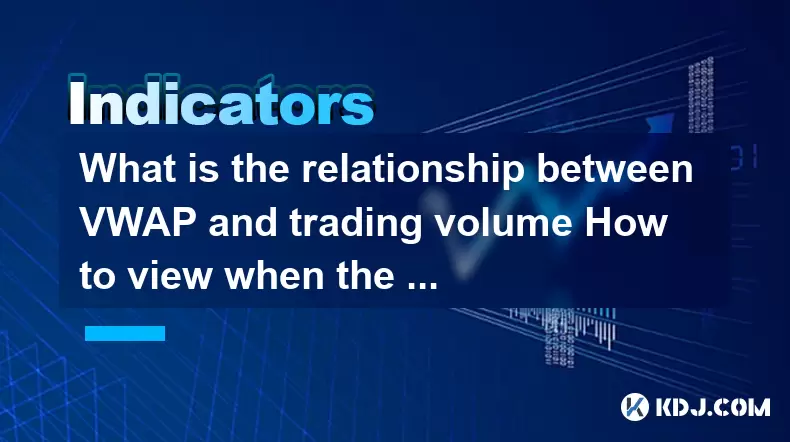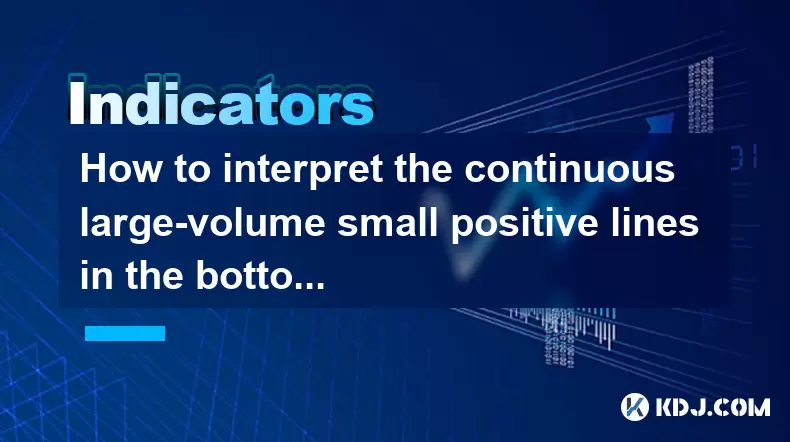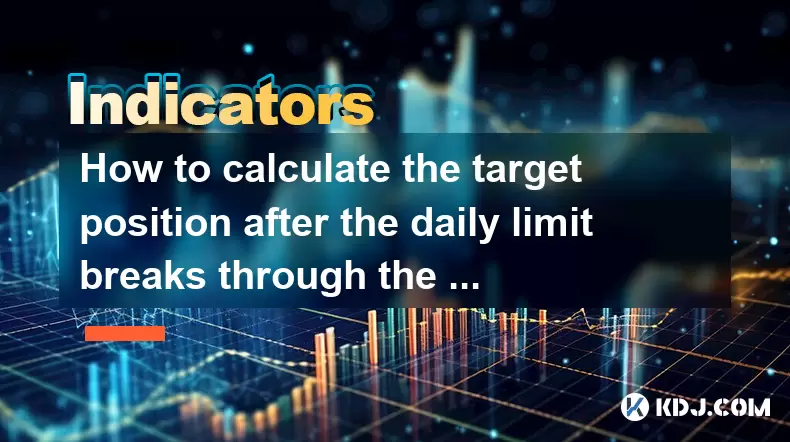-
 Bitcoin
Bitcoin $101,898.5005
-0.75% -
 Ethereum
Ethereum $2,258.1125
-1.07% -
 Tether USDt
Tether USDt $1.0004
0.01% -
 XRP
XRP $2.0178
-2.93% -
 BNB
BNB $624.0243
-1.53% -
 Solana
Solana $134.3298
-0.90% -
 USDC
USDC $0.9999
0.01% -
 TRON
TRON $0.2675
-2.05% -
 Dogecoin
Dogecoin $0.1538
-1.96% -
 Cardano
Cardano $0.5482
-1.11% -
 Hyperliquid
Hyperliquid $35.5636
5.45% -
 Bitcoin Cash
Bitcoin Cash $453.4902
-1.66% -
 Sui
Sui $2.5134
-2.97% -
 UNUS SED LEO
UNUS SED LEO $9.1292
1.77% -
 Chainlink
Chainlink $11.8457
-1.60% -
 Stellar
Stellar $0.2312
-2.73% -
 Avalanche
Avalanche $16.9721
0.29% -
 Toncoin
Toncoin $2.7549
-3.82% -
 Shiba Inu
Shiba Inu $0.0...01081
-1.10% -
 Litecoin
Litecoin $80.8250
-0.71% -
 Hedera
Hedera $0.1374
0.21% -
 Monero
Monero $305.4827
-2.36% -
 Ethena USDe
Ethena USDe $1.0006
0.00% -
 Dai
Dai $1.0000
-0.01% -
 Polkadot
Polkadot $3.2085
-3.12% -
 Bitget Token
Bitget Token $4.0845
-3.13% -
 Uniswap
Uniswap $6.3353
-1.63% -
 Pi
Pi $0.5085
-0.70% -
 Pepe
Pepe $0.0...08913
-3.82% -
 Aave
Aave $232.7090
-0.58%
What is the relationship between VWAP and trading volume How to view when the volume and price diverge
VWAP, crucial in crypto trading, gauges average price weighted by volume, aiding traders in assessing value and spotting divergence signals for informed decisions.
May 24, 2025 at 05:21 am

The Volume Weighted Average Price (VWAP) is a crucial metric in the cryptocurrency trading world, used to gauge the average price at which a cryptocurrency has traded throughout the day, weighted by volume. VWAP is particularly important for traders looking to assess the value of a cryptocurrency at a given time, considering both price and trading volume. The relationship between VWAP and trading volume is intrinsic, as VWAP calculates the average price based on the volume of trades executed at different price levels.
VWAP is calculated by summing the product of price and volume for each trade and then dividing by the total volume of trades during the period. The formula is expressed as:
[ \text{VWAP} = \frac{\sum (P_i \times V_i)}{\sum V_i} ]
Where ( P_i ) is the price of the trade and ( V_i ) is the volume of the trade.
Understanding the Relationship Between VWAP and Trading Volume
The relationship between VWAP and trading volume is direct and significant. VWAP relies on trading volume to provide a more accurate representation of the average price than a simple average price calculation. Higher trading volumes at certain price levels will have a greater impact on the VWAP, reflecting the market's consensus on the value of the cryptocurrency more accurately.
For instance, if a cryptocurrency trades at $100 with a volume of 100 units and then at $110 with a volume of 200 units, the VWAP will be closer to $110 because the higher volume at that price level has a larger influence on the calculation.
How to Identify Divergence Between Volume and Price
Divergence between volume and price occurs when the trading volume does not align with the expected price movement. This can be a critical signal for traders. To identify such divergence, traders need to observe the following:
- Price Increase with Decreasing Volume: If the price of a cryptocurrency is rising but the volume is decreasing, it may indicate weakening bullish momentum. This divergence suggests that fewer traders are willing to buy at the higher price levels, which could lead to a potential reversal.
- Price Decrease with Increasing Volume: Conversely, if the price is falling but the volume is increasing, it might signal strong bearish momentum. This indicates that more traders are selling at the lower prices, which could lead to further price declines.
Using Technical Analysis Tools to View Divergence
Traders can use various technical analysis tools to monitor and analyze the divergence between volume and price. Some commonly used tools include:
- Volume Indicators: These indicators, such as the Volume Oscillator or On-Balance Volume (OBV), help traders visualize the volume trends alongside price movements.
- Charting Platforms: Platforms like TradingView or Coinigy allow traders to overlay volume bars on price charts, making it easier to spot divergences at a glance.
- VWAP Indicator: Many trading platforms offer a VWAP indicator that can be added to charts. This helps traders see how the current price compares to the VWAP and how volume influences this metric.
Steps to View Divergence Using a Charting Platform
To view the divergence between volume and price using a charting platform, follow these steps:
- Select the Cryptocurrency: Choose the cryptocurrency you want to analyze.
- Choose the Timeframe: Select the appropriate timeframe for your analysis, such as 1-hour, 4-hour, or daily charts.
- Add Volume Bars: Ensure that the volume bars are visible on your chart. Most platforms have a volume indicator that can be added easily.
- Add VWAP Indicator: Add the VWAP indicator to your chart. This will show the volume-weighted average price line.
- Analyze Price and Volume: Observe the price movements and corresponding volume bars. Look for instances where the price moves in one direction but the volume moves in another.
- Identify Divergence: Mark the points where you notice significant divergence between price and volume. Use trend lines or other drawing tools to highlight these areas.
Interpreting Divergence Signals
Understanding the implications of divergence between volume and price is crucial for making informed trading decisions. Here are some key points to consider:
- Bullish Divergence: If the price is falling but the volume is increasing, it might indicate that the selling pressure is exhausting, and a potential bullish reversal could be imminent.
- Bearish Divergence: If the price is rising but the volume is decreasing, it suggests that the buying momentum is weakening, which could lead to a bearish reversal.
- Confirmation: Always look for confirmation from other technical indicators or price patterns before making a trading decision based on divergence.
Practical Examples of Divergence in Cryptocurrency Trading
To illustrate the concept of divergence, let's consider a few practical examples from the cryptocurrency market:
- Example 1: Bitcoin (BTC) is trading at $30,000 and starts to rise to $32,000. However, during this price increase, the trading volume decreases significantly. This could be a sign of bearish divergence, suggesting that the price increase might not be sustainable.
- Example 2: Ethereum (ETH) is trading at $2,000 and begins to decline to $1,900. During this decline, the trading volume increases dramatically. This indicates bullish divergence, suggesting that the selling pressure might be nearing its end, and a price recovery could be on the horizon.
Using VWAP to Enhance Trading Strategies
VWAP can be a powerful tool when integrated into trading strategies. Traders often use VWAP as a benchmark to determine whether to buy or sell a cryptocurrency. Here are some strategies that incorporate VWAP:
- VWAP as Support and Resistance: Traders may use VWAP as a dynamic support or resistance level. If the price is above VWAP, it might be considered a bullish signal, while a price below VWAP could be seen as bearish.
- VWAP Crossover: Some traders use the crossover of the price with VWAP as a signal to enter or exit trades. For example, buying when the price crosses above VWAP and selling when it crosses below.
- VWAP and Volume Analysis: Combining VWAP with volume analysis can provide deeper insights into market trends. If the price is above VWAP and volume is increasing, it could reinforce a bullish trend.
Frequently Asked Questions
Q1: Can VWAP be used for all cryptocurrencies, or is it more effective for certain types?
A1: VWAP can be used for all cryptocurrencies, but its effectiveness may vary depending on the liquidity and trading volume of the specific cryptocurrency. For highly liquid cryptocurrencies like Bitcoin and Ethereum, VWAP provides more reliable data due to the higher volume of trades. For less liquid cryptocurrencies, the VWAP might be less accurate due to lower trading volumes and potential price manipulation.
Q2: How often should traders recalculate VWAP to ensure it remains relevant?
A2: Traders typically recalculate VWAP on a daily basis, as it is most commonly used as a daily indicator. However, for intraday trading, VWAP can be recalculated on shorter timeframes such as hourly or even minute-by-minute, depending on the trader's strategy and the timeframe they are focusing on.
Q3: Are there any specific scenarios where divergence between volume and price is more significant?
A3: Divergence between volume and price is particularly significant during market turning points, such as potential trend reversals or breakouts. For instance, if a cryptocurrency is approaching a resistance level and the price is rising but the volume is decreasing, this divergence could signal a false breakout. Conversely, if the price is approaching a support level and the volume is increasing while the price is falling, it might indicate a strong support level and a potential reversal.
Q4: How can traders use VWAP in conjunction with other indicators to improve their analysis?
A4: Traders can enhance their analysis by using VWAP in conjunction with other indicators such as Moving Averages, Relative Strength Index (RSI), and Bollinger Bands. For example, if the price is above VWAP and the RSI is also indicating overbought conditions, it might reinforce a bullish signal. Similarly, if the price is below VWAP and the RSI indicates oversold conditions, it could strengthen a bearish signal. Combining VWAP with other indicators helps traders get a more comprehensive view of the market dynamics.
Disclaimer:info@kdj.com
The information provided is not trading advice. kdj.com does not assume any responsibility for any investments made based on the information provided in this article. Cryptocurrencies are highly volatile and it is highly recommended that you invest with caution after thorough research!
If you believe that the content used on this website infringes your copyright, please contact us immediately (info@kdj.com) and we will delete it promptly.
- XRP Rally Meets Neo Pepe Presale: A Meme Coin Revolution?
- 2025-06-23 17:05:13
- Coin-Op Comeback: Arcade Bars, Stern, and a Director's New Venture
- 2025-06-23 16:45:12
- XRP in Japan: From Community Day Tacos to Payment Sector Transformation
- 2025-06-23 17:05:13
- LILPEPE Presale Frenzy: The Meme Coin Revolution is Here, Ya'll!
- 2025-06-23 16:45:12
- Bitcoin Crash Incoming? Kiyosaki Bets Big on Silver Amidst Global Uncertainty
- 2025-06-23 17:25:11
- Dogecoin, Meme Coins, Price Prediction: Riding the Bullish Wave?
- 2025-06-23 17:25:11
Related knowledge

Is the high opening and low closing and huge volume the next day a trap for more?
Jun 23,2025 at 05:07pm
Understanding High Opening and Low Closing with Huge VolumeWhen traders observe a high opening followed by a low closing and massive volume the next day, it often raises concerns about whether this is a trap set by larger players in the market. This pattern typically indicates strong volatility within a short period, which can confuse retail investors. ...

How to interpret the MACD's second golden cross on the water but insufficient volume?
Jun 23,2025 at 05:01pm
Understanding the MACD Indicator and Its SignificanceThe Moving Average Convergence Divergence (MACD) is a widely used technical analysis tool in cryptocurrency trading. It helps traders identify potential buy or sell signals by showing the relationship between two moving averages of an asset’s price. The MACD line, signal line, and histogram are the th...

How much volume is required for the W-bottom to break through the neckline of the time-sharing chart?
Jun 23,2025 at 04:21pm
Understanding the W-Bottom Pattern in Cryptocurrency TradingThe W-bottom pattern is a popular technical analysis formation used by traders to identify potential bullish reversals. It typically appears at the end of a downtrend and resembles the letter 'W' on price charts. In the context of cryptocurrency trading, where volatility is high and trends shif...

How to interpret the continuous large-volume small positive lines in the bottom area?
Jun 23,2025 at 04:43pm
Understanding the Basics of 'Large-Volume Small Positive Lines'In technical analysis, especially within the cryptocurrency market, the pattern known as 'large-volume small positive lines' refers to a scenario where the price increases slightly (small positive candlestick) but is accompanied by unusually high trading volume. This phenomenon typically occ...

How to read the sideways consolidation after the bottom volume and long positive line?
Jun 23,2025 at 02:28pm
Understanding the Sideways ConsolidationWhen analyzing cryptocurrency charts, sidewards consolidation refers to a phase where prices move within a narrow range without a clear upward or downward trend. This pattern often appears after significant price movements, such as a sharp increase followed by a period of equilibrium between buyers and sellers. In...

How to calculate the target position after the daily limit breaks through the previous high?
Jun 23,2025 at 02:57pm
Understanding the Daily Limit BreakthroughIn cryptocurrency trading, a daily limit typically refers to the maximum price movement allowed within a single trading day on certain exchanges. When this limit is breached, especially when it surpasses the previous high, traders often seek to calculate the target position or expected price movement following s...

Is the high opening and low closing and huge volume the next day a trap for more?
Jun 23,2025 at 05:07pm
Understanding High Opening and Low Closing with Huge VolumeWhen traders observe a high opening followed by a low closing and massive volume the next day, it often raises concerns about whether this is a trap set by larger players in the market. This pattern typically indicates strong volatility within a short period, which can confuse retail investors. ...

How to interpret the MACD's second golden cross on the water but insufficient volume?
Jun 23,2025 at 05:01pm
Understanding the MACD Indicator and Its SignificanceThe Moving Average Convergence Divergence (MACD) is a widely used technical analysis tool in cryptocurrency trading. It helps traders identify potential buy or sell signals by showing the relationship between two moving averages of an asset’s price. The MACD line, signal line, and histogram are the th...

How much volume is required for the W-bottom to break through the neckline of the time-sharing chart?
Jun 23,2025 at 04:21pm
Understanding the W-Bottom Pattern in Cryptocurrency TradingThe W-bottom pattern is a popular technical analysis formation used by traders to identify potential bullish reversals. It typically appears at the end of a downtrend and resembles the letter 'W' on price charts. In the context of cryptocurrency trading, where volatility is high and trends shif...

How to interpret the continuous large-volume small positive lines in the bottom area?
Jun 23,2025 at 04:43pm
Understanding the Basics of 'Large-Volume Small Positive Lines'In technical analysis, especially within the cryptocurrency market, the pattern known as 'large-volume small positive lines' refers to a scenario where the price increases slightly (small positive candlestick) but is accompanied by unusually high trading volume. This phenomenon typically occ...

How to read the sideways consolidation after the bottom volume and long positive line?
Jun 23,2025 at 02:28pm
Understanding the Sideways ConsolidationWhen analyzing cryptocurrency charts, sidewards consolidation refers to a phase where prices move within a narrow range without a clear upward or downward trend. This pattern often appears after significant price movements, such as a sharp increase followed by a period of equilibrium between buyers and sellers. In...

How to calculate the target position after the daily limit breaks through the previous high?
Jun 23,2025 at 02:57pm
Understanding the Daily Limit BreakthroughIn cryptocurrency trading, a daily limit typically refers to the maximum price movement allowed within a single trading day on certain exchanges. When this limit is breached, especially when it surpasses the previous high, traders often seek to calculate the target position or expected price movement following s...
See all articles
























































































